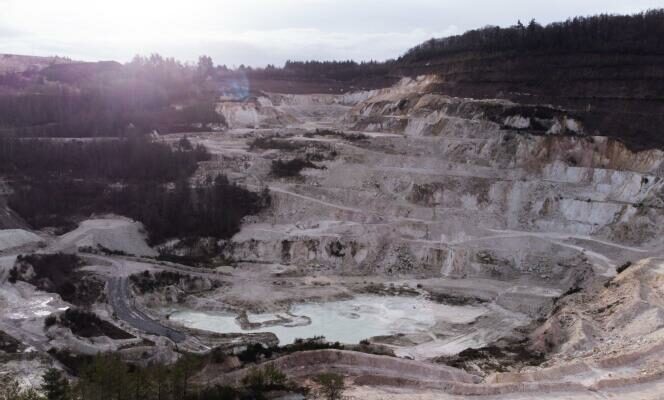The road sign at the entrance to the village is still upside down, a sign of the agricultural anger that has crossed the French countryside in recent weeks. Echassières, in Allier, is a village nestled at the end of a winding departmental road which runs along the Colettes forest, a 2,000 hectare massif classified Natura 2000, on the border of Puy-de-Dôme, between Moulins and Clermont -Ferrand.
In its center, the church adjoins the school and the town hall. A bakery, a grocery store and a restaurant complete the picture. The accommodation establishment for dependent elderly people (Ehpad) is under construction to expand, and the cemetery, as often, closes the walk. A rural town of some 400 inhabitants, like there are thousands in the country, which could tomorrow become the site of the largest lithium mine in France and perhaps in Europe, in this bucolic and somewhat forgotten corner of the ‘Auvergne.
In October 2022, the French group Imerys (13,700 employees spread across 57 countries and 3.8 billion euros in turnover in 2023) created a surprise by announcing its plan to open a lithium mine on the quarry of Beauvoir, on the heights of Echassières, where the multinational has been mining kaolin for ceramics since 2005. Surveys have shown that the granite subsoil rich in mica would contain on average 1% of lithium, this white ore used in manufacturing, between others, electric automobile batteries. A new mine in mainland France, unheard of for almost half a century!
The numbers are impressive
In January 2024, the project called “Emili” (for “exploitation of lithiniferous mica”) takes shape. Three sites have been selected for its construction: in Echassières, the underground mine and the concentration plant to separate the minerals contained in the granite; in Saint-Bonnet-de-Rochefort, a village 15 kilometers away, the construction of a lithium storage space then sent to Montluçon, 59 kilometers away, which will house the conversion plant for its refining. Start of production planned for the end of 2028, with operations expected to last at least a quarter of a century.
The project is colossal, and the figures presented by Imerys are impressive: 1 billion euros of planned investment; 34,000 tonnes of lithium hydroxide produced per year, enough to equip them with batteries “700,000 electric vehicles” ; “between 500 and 600” direct jobs created and “at least 1,000 indirect jobs”. All with the commitment by the multinational to achieve a “responsible mine”that is to say respectful of environmental and health issues.
You have 75.17% of this article left to read. The rest is reserved for subscribers.
